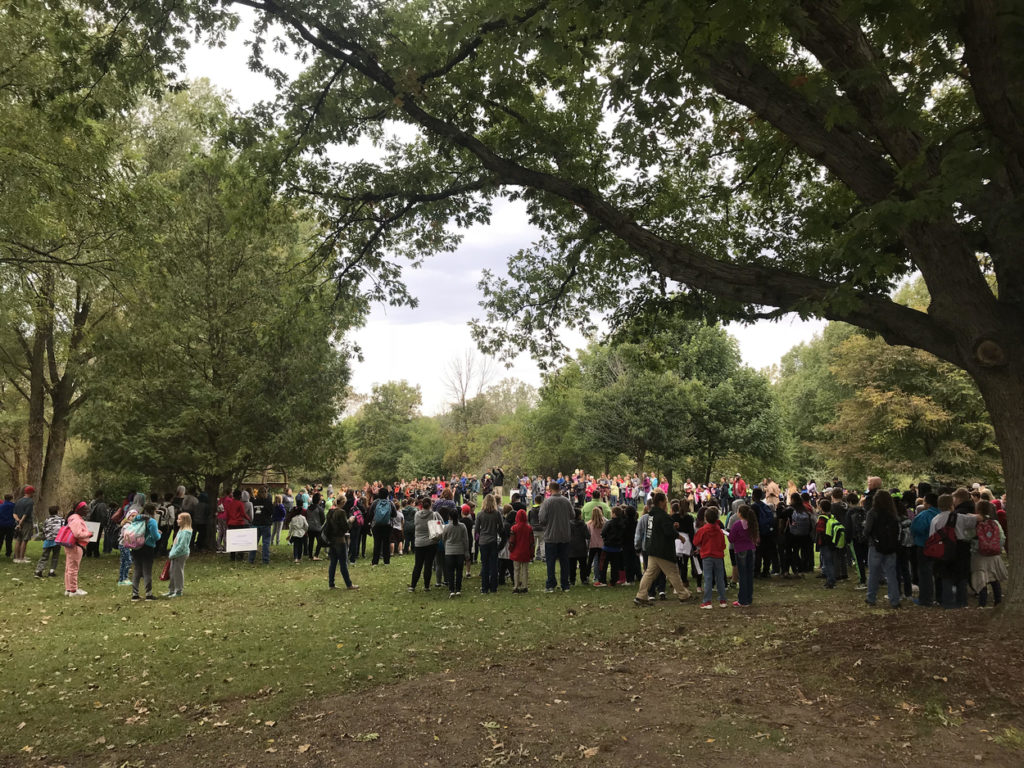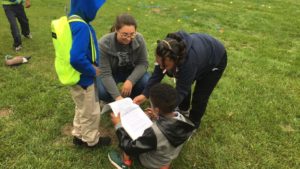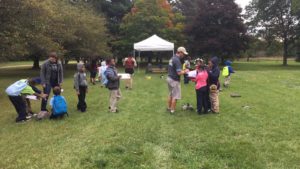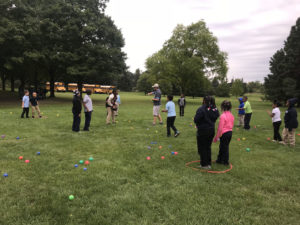
For-Mar Bio Blitz
On the last Friday in September, MUCC was invited by For-Mar Nature Preserve and Arboretum to attend their Bio-Blitz event. This event was a field trip day for schools in Genesee County to join scientists and learn about nature through hands-on activities. In attendance were several elementary schools as well as student groups of homeschool families. The MUCC booth was one of 30 exhibitors who spent the day working with the students.
As usual, I was ready for the kids with my typical waterfowl ID course and taxidermy duck mounts. However, at this event our Wildlife Cooperative Coordinator Morgan Warda accompanied me. On a typical day, Morgan is usually busy helping cooperatives grow and helping landowners improve the habitat on their private land. Morgan graduated from UM-Flint and had worked this event before, with a stroke of luck and an available Friday, she was excited to join me for an outreach day and I was happy to have an extra set of hands.

With the addition of Morgan, we also changed the booth game plan a little. Instead of an hour of waterfowl, we split the lesson into 30 minutes of ducks and 30 minutes of pheasants. The pheasant lesson helped connect Morgan’s position a bit and educate the students on an upland bird.
We worked with two classes of students during the day. Each class worked their way through our decoy scavenger hunt. Working in small groups the students used a guidebook to identify ducks and learn facts about each species. After the duck portion we decided to let, the kids work some energy off with the pheasant tag game.

The pheasant tag game teaches the importance of good habitat and how wildlife populations rise and fall. We use hula-hoops as areas of quality shelter, and balls represent food sources. The kids are pheasants and are required to run around collecting a certain amount of food each round and then return to their shelter areas. While the pheasants are collecting food, we introduce “taggers” the taggers are predators whose job is to tag the pheasants and eat them. Predators can be hawks or coyotes. At the end of each round, we also have developers and farmers who change the shelter opportunities. We either add or remove the amount of shelter based on the number of pheasants.

This game is a fun way for kids to understand why quality habitat is important including shelter, food and space. It also allows us to highlight the cycle of predator and prey relationships in a fun and interactive game.
With Morgan’s help throughout the day, we kept the kids engaged and focused. The teachers and event organizers were happy with our activities and the kids all left with smiles on their faces. With 100s of kids attending this event, it is one we will look forward to attending next year.
